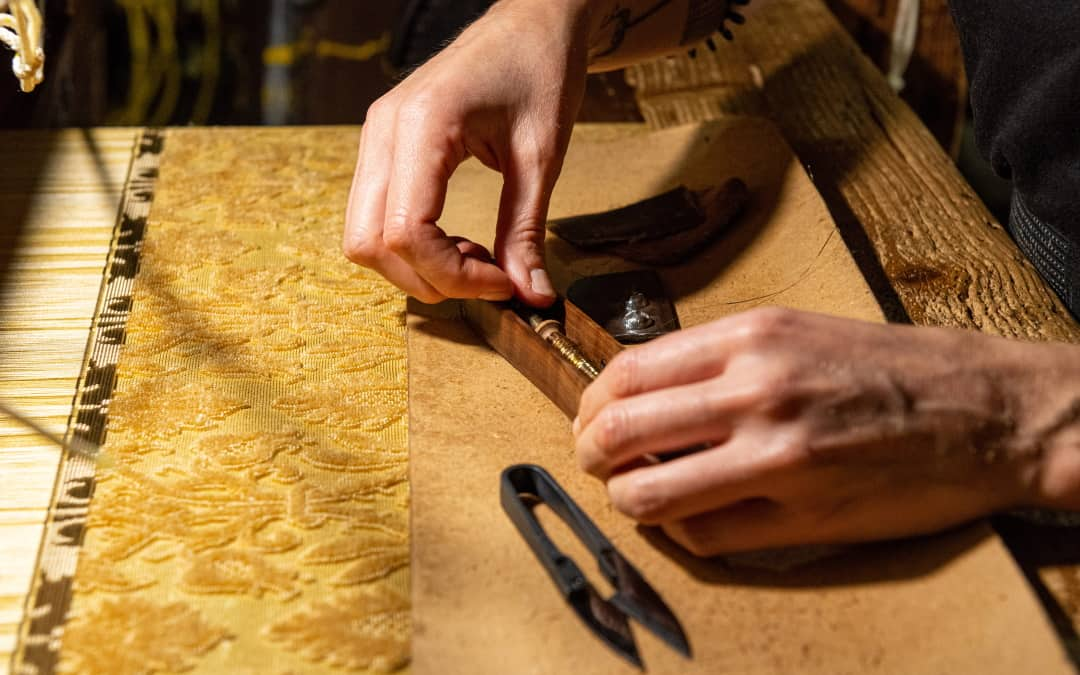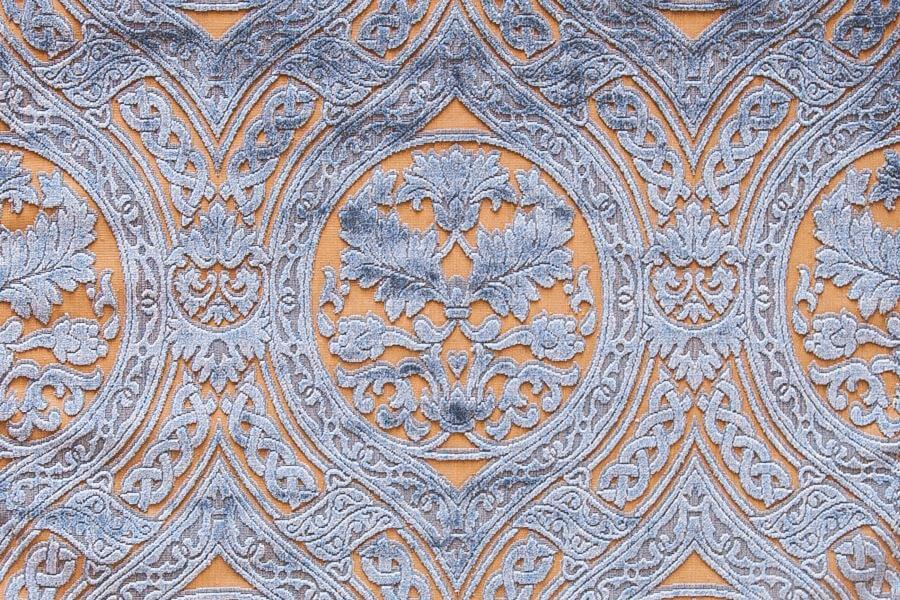Velvet (from the late Latin word vĭllūtus, deriving from villus, the hair of fur-bearing animals), a symbol of power and wealth, has been the favourite fabric of popes and aristocrats for centuries. In modern times, luxurious velvet is not only appreciated by the major fashion brands, but also by the world of interior design and home decoration.
The soprarizzo (also called “soprariccio”) or cesellato velvet, in particular, is the most precious velvet of our manual production. That’s because it’s woven on original 18th-century looms and requires a more complex manufacturing process combining cut and curly velvet. The result is a unique fabric with silky and brilliant tones and a three-dimensional design.
The Characteristics of Our Soprarizzo or Cesellato Velvet
Certain features make this precious fabric incomparable and help us to recognize it.
- Each cesellato velvet is a unique piece, an exclusive creation of the highest craftsmanship. In fact, despite weavers’ excellent skills, the pressure they put on the loom in the weaving process, which is entirely manual, can be slightly different from one day to another.
- It’s an iridescent fabric, thanks to the presence of two different types of pile, one curly at the base and one cut, smoother and higher. This process enhances the design with its three-dimensionality and, above all, allows the light to reflect on the two types of velvet in a different way, making the cut pile darker and the curl one lighter, thus creating extraordinary effects of light, shade and depth.
- The manual velvet process is so complex that it requires weavers with a great deal of training and experience: it takes years to master this art.
Da Vinci soprarizzo velvet – Tessitura Luigi Bevilacqua
- Our daily production is only around 30 cm. This is because its processing is very complex and time consuming and requires, among other elements, precision and physical strength. Our weaver has to press the loom pedals to move both the perforated cards in the Jacquard machine and the warp and weft threads. In addition, for each millimeter of fabric, she must pull out the needle that creates the curly velvet and slide the blade over the one that creates the cut pile. Moreover, the loom which dates back to the 18th century isn’t as fast as modern machines and must often be recharged and reset.
- The width of this fabric does not exceed 67 cm (which corresponds roughly to the length of an arm). This is for a very practical reason: in the production of manual velvet, our weaver must continuously cut the silk threads that will form the pile throughout the width of the fabric with a very sharp arm movement. If this width exceeded the length of her arm, the cut couldn’t be clean and precise.
- The preparation of the manual loom can take up to 6 months and requires from two to three of our weavers. It starts from a drawing that is reproduced on graph paper to create the punched cards that are the basis for the functioning of the jacquard loom. It follows the preparation of the warp (on original 18th-century revolving warps) and the setting up of the cantra, the machine used to load the threads on the loom, where our weavers patiently place hundreds of reels of thread.
Cover photo credit: Elena Rosignoli



